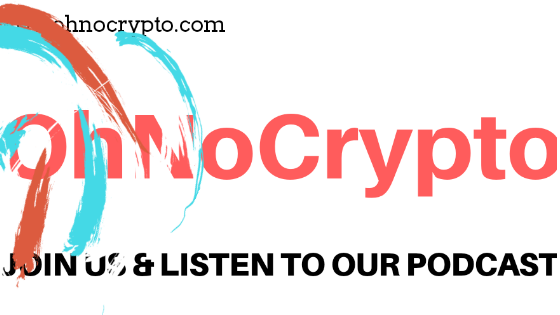Vitalik Buterin states that the Ethereum Layer 2 scaling strategy is succeeding
#crypto #bitcoin

OhNoCrypto
via https://www.ohnocrypto.com
Andy Pickering, Khareem Sudlow

Ethereum is an open-source, public, blockchain with smart contract functionality. The platform lets developers build blockchain applications, with business logic, that execute in a trustless environment. The Ethereum ecosystem is working towards a major network update titled Serenity. Serenity includes a full rewrite and redesign of the Ethereum blockchain, resulting in Ethereum 2.0.
Ethereum 2.0 will introduce sharding, a new virtual machine, and a shift from a proof-of-work (PoW) consensus algorithm to a new proof-of-stake (PoS) consensus algorithm. The upgrade will be rolled out in phases. Buterin and the Ethereum development community had been working towards a launch of phase zero of the Serenity chain in July.
During an appearance at the Consensus: Distributed conference in May, Buterin reportedly confirmed the July launch date as proposed by Justin Drake, the lead researcher for the Ethereum 2.0. However, Buterin later clarified his position. “My actual stance is that eth2 is ‘on track’ in that there aren’t any unexpected bumps in the road, testnets are coming along, etc, but I defer to the client devs on timelines and if they are now saying ‘Q3’ more broadly then I believe them,” he stated.
Layer 2 scaling solutions are just one component of the complex Ethereum 2.0 roadmap. The scaling solutions are designed to achieve faster blockchain transaction times, and lower fees, without compromising the security of the Layer 1 blockchain.
To demonstrate the success of the first implementations of the Layer 2 scaling strategy, Buterin referenced several milestones from different segments of the Ethereum ecosystem. The milestones were listed in a thread tweeted by Philippe Castonguay, Smart Contract Research and Development Lead at Horizon Games.
The first milestone is from Starkware, a company that aims to increase scalability and privacy on blockchains using zero-knowledge cryptographic proofs. Starkware announced that its StarkEx solution has “trustlessly onboarded to Ethereum Mainnet 1.3M accounts with initial balances.” The company states that this “effectively demonstrates how an entire subreddit the size of r/FortNiteBR (with its Brick tokens) could be brought onto Mainnet. The amortized price per transfer: 600 gas.”
The Starknet team said they achieved this without creating any network congestion. “We did it over a ~12 hour period while using 2.5% of the network,” the company clarified. “We paid gas prices that were on average 30% below the average block gas price during this time.”
The next example cited by Castonguay is from Loopring, an Ethereum zkRollup Exchange Protocol designed for scalable, self-custodial crypto trading. In an update published on Monday, Loopring announced that the Loopring Exchange has settled more than one million trades. “We are launching Loopring Pay next week, a zkSNARK-based layer-2 fast transfer service, and getting ready for an invite-only beta testing for Loopring Wallet,” the company states.
Further evidence of a successful Layer 2 scaling solution as noted by Castonguay and Buterin is the integration of Tether into the OMG Network’s new Plasma sidechain. OMG Network, formally known as OmiseGo, launched the Plasma-based sidechain on Monday.
Another project to launch this week is Matic Network, a blockchain application platform that provides developers with the ability to deploy applications. Matic Network’s mainnet launch will be spread over multiple steps. Step 1 will onboard its first Dapp partners, and include a Genesis Ceremony and mainnet launch with an initial validator set. The network uses a combination of a hybrid Proof-of-Stake consensus algorithm and Plasma-enabled sidechains.
The Plasma layer-2 scaling solution was proposed by Joseph Poon and Vitalik Buterin in their paper Plasma: Scalable Autonomous Smart Contracts. Ethhub says Plasma “is a framework for building scalable applications. Plasma uses a combination of smart contracts and cryptographic verification. Together, these enable fast and cheap transactions by offloading these transactions from the main Ethereum blockchain into a ‘side’ chain.”
While Plasma was once considered a promising solution to Ethereum scalability, ETH developers have since moved away from the solution after weaknesses were found. These flaws were documented in a Medium post by Dragonfly Research. It said that Plasma users would have to continuously verify the sidechain, a task that would consume significant computational resources. Dragonfly Research notes that “Optimistic Rollup solutions,” are a promising new area of research when it comes to scaling the ecosystem.
This view appeared to be endorsed by the OMG Network. “For those who have been keeping up with Layer 2 scaling, you’ve probably noticed a recurring theme of batched transactions,” the company states. “Best exemplified by Optimistic Rollups as seen in test environments like Synthetix’s Layer 2 Exchange, OMG Network groups transactions together on a Plasma childchain, all of which are then batched and routed to the Ethereum parent chain. To participate and decentralize this process, OMG Network will introduce the role of ‘watchers’ who post a stake in the form of OMG tokens to batch and route transactions on behalf of childchains.”
Dragonfly Research concludes that “the search for the final layer-2 scaling solution is just getting started. There are many contenders, and we expect the field to remain an active and exciting area of research and development.”
Ethereum 2.0 will introduce sharding, a new virtual machine, and a shift from a proof-of-work (PoW) consensus algorithm to a new proof-of-stake (PoS) consensus algorithm. The upgrade will be rolled out in phases. Buterin and the Ethereum development community had been working towards a launch of phase zero of the Serenity chain in July.
During an appearance at the Consensus: Distributed conference in May, Buterin reportedly confirmed the July launch date as proposed by Justin Drake, the lead researcher for the Ethereum 2.0. However, Buterin later clarified his position. “My actual stance is that eth2 is ‘on track’ in that there aren’t any unexpected bumps in the road, testnets are coming along, etc, but I defer to the client devs on timelines and if they are now saying ‘Q3’ more broadly then I believe them,” he stated.
Layer 2 scaling solutions are just one component of the complex Ethereum 2.0 roadmap. The scaling solutions are designed to achieve faster blockchain transaction times, and lower fees, without compromising the security of the Layer 1 blockchain.
To demonstrate the success of the first implementations of the Layer 2 scaling strategy, Buterin referenced several milestones from different segments of the Ethereum ecosystem. The milestones were listed in a thread tweeted by Philippe Castonguay, Smart Contract Research and Development Lead at Horizon Games.
The first milestone is from Starkware, a company that aims to increase scalability and privacy on blockchains using zero-knowledge cryptographic proofs. Starkware announced that its StarkEx solution has “trustlessly onboarded to Ethereum Mainnet 1.3M accounts with initial balances.” The company states that this “effectively demonstrates how an entire subreddit the size of r/FortNiteBR (with its Brick tokens) could be brought onto Mainnet. The amortized price per transfer: 600 gas.”
The Starknet team said they achieved this without creating any network congestion. “We did it over a ~12 hour period while using 2.5% of the network,” the company clarified. “We paid gas prices that were on average 30% below the average block gas price during this time.”
The next example cited by Castonguay is from Loopring, an Ethereum zkRollup Exchange Protocol designed for scalable, self-custodial crypto trading. In an update published on Monday, Loopring announced that the Loopring Exchange has settled more than one million trades. “We are launching Loopring Pay next week, a zkSNARK-based layer-2 fast transfer service, and getting ready for an invite-only beta testing for Loopring Wallet,” the company states.
Further evidence of a successful Layer 2 scaling solution as noted by Castonguay and Buterin is the integration of Tether into the OMG Network’s new Plasma sidechain. OMG Network, formally known as OmiseGo, launched the Plasma-based sidechain on Monday.
Another project to launch this week is Matic Network, a blockchain application platform that provides developers with the ability to deploy applications. Matic Network’s mainnet launch will be spread over multiple steps. Step 1 will onboard its first Dapp partners, and include a Genesis Ceremony and mainnet launch with an initial validator set. The network uses a combination of a hybrid Proof-of-Stake consensus algorithm and Plasma-enabled sidechains.
The Plasma layer-2 scaling solution was proposed by Joseph Poon and Vitalik Buterin in their paper Plasma: Scalable Autonomous Smart Contracts. Ethhub says Plasma “is a framework for building scalable applications. Plasma uses a combination of smart contracts and cryptographic verification. Together, these enable fast and cheap transactions by offloading these transactions from the main Ethereum blockchain into a ‘side’ chain.”
While Plasma was once considered a promising solution to Ethereum scalability, ETH developers have since moved away from the solution after weaknesses were found. These flaws were documented in a Medium post by Dragonfly Research. It said that Plasma users would have to continuously verify the sidechain, a task that would consume significant computational resources. Dragonfly Research notes that “Optimistic Rollup solutions,” are a promising new area of research when it comes to scaling the ecosystem.
This view appeared to be endorsed by the OMG Network. “For those who have been keeping up with Layer 2 scaling, you’ve probably noticed a recurring theme of batched transactions,” the company states. “Best exemplified by Optimistic Rollups as seen in test environments like Synthetix’s Layer 2 Exchange, OMG Network groups transactions together on a Plasma childchain, all of which are then batched and routed to the Ethereum parent chain. To participate and decentralize this process, OMG Network will introduce the role of ‘watchers’ who post a stake in the form of OMG tokens to batch and route transactions on behalf of childchains.”
Dragonfly Research concludes that “the search for the final layer-2 scaling solution is just getting started. There are many contenders, and we expect the field to remain an active and exciting area of research and development.”
OhNoCrypto
via https://www.ohnocrypto.com
Andy Pickering, Khareem Sudlow

